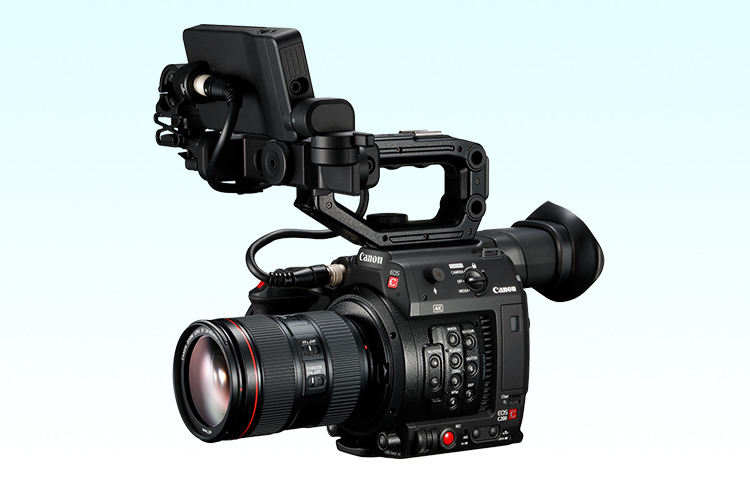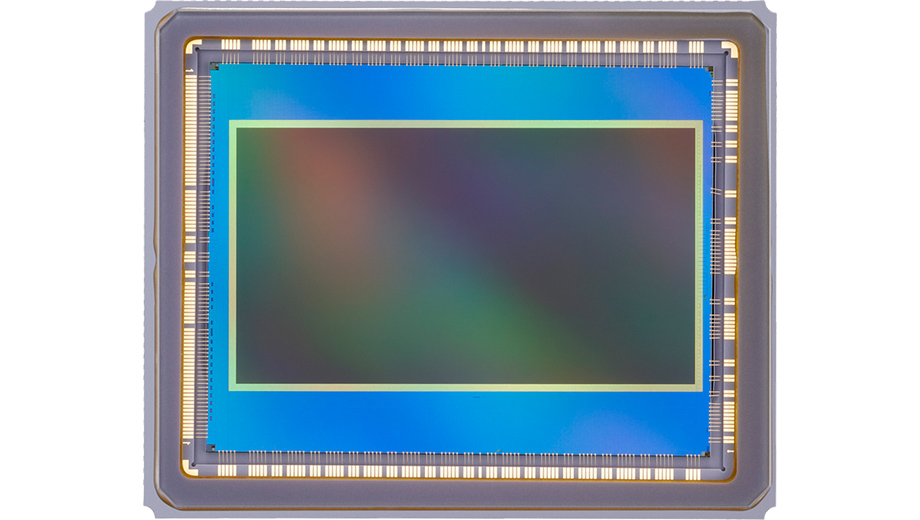

Canon's digital cinema cameras offer not only high image quality, but also superior mobility and scalability to meet the exacting demands of professionals working in the motion-picture, television, documentary and commercial production industries. These cameras are equipped with advanced technologies that are opening up new possibilities for visual production.
2018/12/27Featured Technology
Canon has developed a Super 35-mm-equivalent CMOS sensor, which offers an image size comparable to the frame size of film used in movie production, for use with digital cinema cameras for the motion-picture production industry. In addition to high image quality, the sensor incorporates Canon's high-sensitivity and low-noise technologies to capture high-sensitivity, high-resolution HDR video with wide color gamut and dynamic range exceeding ITU-R BT.20201. The top-of-the-line EOS C700 FF and EOS C700 FF PL models incorporate a newly developed full-frame CMOS sensor that makes possible a wide dynamic range of more than 15 stops.
The CMOS sensor also features increased read-out speed, which successfully reduces rolling shutter skew.

Super 35-mm-Equivalent CMOS Sensor

Full-Frame CMOS Sensor
#Imaging technologies#Automation#Mechanical engineering#Electrical engineering#Physics
Dual Pixel CMOS AF is revolutionary sensor-based phase detection AF technology utilizing a CMOS sensor on which all pixels are capable of both image capture and phase detect AF. Each pixel of the CMOS sensor consists of two separate photodiodes, and can simultaneously output an imaging signal and signal used for phase detection AF. These two photodiodes capture light separately, and during AF detection, each sends a separate signal which are then combined during recording into a single one for image capture.
This enables not only high-speed, high-precision AF, but also smooth, sensitive AF offering a high degree of tracking ability suitable for video recording.

One pixel(*Conceptual illustration)
#Imaging technologies#Patents
Motion-picture production professionals in Hollywood and throughout the world make use of Log, a standard encoding format for digitizing footage captured on film. Also called Cineon, this 10-bit format represents film negatives with a density of 0.002 by using a digital value of 1, enabling film information to be recorded with a sufficient density range as 10-bit data, which offers 1,024 levels of color. Simply put, Cineon is a standardized format for the digital copying of film.
The greatest benefit of Log is that users can digitally manage visual information offering a dynamic range that is wider than that produced by conventional video gamma. Canon Log, Canon Log 2, and Canon Log 3 deliver video with a dynamic range similar to that offered by film, which is close to that seen by the human eye, capturing highlights and other details of background scenery such as mountain ranges even when the exposure is adjusted to a closer subject. A wide color gamut minimizes the occurrence of over- and under-exposed areas, making it possible to achieve a wider range of visual expression that was previously not possible when using conventional video cameras.
Canon Log Gamma draws out the full potential of the CMOS sensor to achieve a dynamic range of approximately 800%, rich gradations, minimized occurrence of under-exposed areas, and natural-looking image expression with subdued contrast and sharpness. What's more, the newly designed Canon Log 2 and Canon Log 3 make possible a dynamic range of approximately 1,600%2 and enable more finely tuned adjustment of details in highlights and shadows while expanding the range of color grading.

#Imaging technologies
After extracting and adjusting the desired color-range information from the wide gamut offered by the captured video data, users can create finished works based on their tastes and creative targets, a process known as color grading. Workflows using Log data enable a wide range of video expression possibilities exceeding that offered by film.
The use of file-based workflows improves efficiency through coordination with major nonlinear editing systems. Footage captured using custom picture settings or Canon Log/Canon Log 2/Canon Log 3 Gamma can be converted to the Cineon format to allow efficient editing in combination with film footage. Users can record in the 24.00P mode, the same frame rate used when shooting on film, enabling video to be handled on the same timeline.